Like PET SHOP BOYS, NEW ORDER collaborated with other artists from quite an early stage in their career, as well as later working on their own various projects during the band’s recurring hiatuses.
Even in the JOY DIVISION era, Ian Curtis, together with manager Rob Gretton produced ‘Knew Noise’ by SECTION 25 in 1979. Following the passing of the charismatic front man, NEW ORDER underwent a well-documented transformation.
Aided by the advancements in technology, while NEW ORDER began with electronic instruments such as the Doctor Rhythm DR-55 drum machine, ARP Quadra and Sequential Pro-One, their synth armoury would expand to a Moog Source, Emulator, several Prophet 5s and an Oberheim DMX.
Bernard Sumner in particular relished the opportunity to further his craft by recording with other artists. Although more naturally inclined to the live environment, Peter Hook did bring his experience into the studio as well, while Stephen Morris and Gillian Gilbert primarily found an outlet for their knowhow within television. The compilation boxed set ‘NEW ORDER Presents Be Music’ released on Factory Benelux gathered many of these works.
But there are still a significant number of tracks which featured the artistic input and involvement of a NEW ORDER member that are worthy of discovery and recognition. So here are 20 tracks which encapsulate the spirit of NEW ORDER through the medium of collaboration and joint working, restricted to one track per project and presented in chronological order.
MARTHA Light Years From Love (1983)
 Martha Ladly had produced the paintings for the Peter Saville Associates artwork of ‘Temptation’ and the ‘1981-1982’ EP. Formally of MARTHA & THE MUFFINS, she teamed up with fellow Canadian Brett Wickens on this charming pop tune that echoed THE HUMAN LEAGUE’s ‘Open Your Heart’. Peter Hook provided his distinctive melodic six-string bass and dynamic production came from Steve Nye. The promo video was directed by Midge Ure and Chris Cross of ULTRAVOX.
Martha Ladly had produced the paintings for the Peter Saville Associates artwork of ‘Temptation’ and the ‘1981-1982’ EP. Formally of MARTHA & THE MUFFINS, she teamed up with fellow Canadian Brett Wickens on this charming pop tune that echoed THE HUMAN LEAGUE’s ‘Open Your Heart’. Peter Hook provided his distinctive melodic six-string bass and dynamic production came from Steve Nye. The promo video was directed by Midge Ure and Chris Cross of ULTRAVOX.
Originally released as a single on Island Records, currently unavailable
http://samemistakesmusic.blogspot.com/2009/01/charmed-life-of-martha-ladly_22.html
52ND STREET Cool As Ice (1983)
 While the trailblazing electro of ‘Cool As Ice’ was solely produced by Donald Johnson, Bernard Sumner contributed the synth basslines which were from a Moog Source run from a Powertran 1024 sequencer; it was to become the trademark feature on many of the NEW ORDER front man’s productions. The hybrid of authentic Manchester soul courtesy of Beverley McDonald’s vocals and New York urban influences was unsurprisingly a cult success across the Atlantic.
While the trailblazing electro of ‘Cool As Ice’ was solely produced by Donald Johnson, Bernard Sumner contributed the synth basslines which were from a Moog Source run from a Powertran 1024 sequencer; it was to become the trademark feature on many of the NEW ORDER front man’s productions. The hybrid of authentic Manchester soul courtesy of Beverley McDonald’s vocals and New York urban influences was unsurprisingly a cult success across the Atlantic.
Available on the compilation boxed set ‘‘NEW ORDER Presents Be Music’ (V/A) via Factory Benelux
https://www.discogs.com/artist/11896-52nd-Street
MARCEL KING Reach For Love (1984)
 One of Bernard Sumner’s productions for with Donald Johnson, ‘Reach For Love’ featured the late Marcel King who was in SWEET SENSATION, a vocal group who won ‘New Faces’ and had a No1 with ‘Sad Sweet Dreamer’. With its distinctive Moog bassline programming, this was a vibrant electro disco tune. Shaun Ryder of HAPPY MONDAYS remarked that if this had been released on a label other than Factory Records, it would have been a hit!
One of Bernard Sumner’s productions for with Donald Johnson, ‘Reach For Love’ featured the late Marcel King who was in SWEET SENSATION, a vocal group who won ‘New Faces’ and had a No1 with ‘Sad Sweet Dreamer’. With its distinctive Moog bassline programming, this was a vibrant electro disco tune. Shaun Ryder of HAPPY MONDAYS remarked that if this had been released on a label other than Factory Records, it would have been a hit!
Available on the compilation boxed set ‘NEW ORDER Presents Be Music’ (V/A) via Factory Benelux
https://www.discogs.com/artist/36617-Marcel-King
NYAM NYAM Fate/Hate (1984)
 Despite Peter Hook’s more rock inclined sympathies and productions for acts like STOCKHOLM MONSTERS and THE STONE ROSES, he showed that he knew his way around the dancefloor as well with this Moroder-esque offering by Hull combo NYAM NYAM which he produced. Featuring a Roland TR808 plus NEW ORDER’s Emulator and Prophet 5 amongst its instrumentation, ‘Fate/Hate’ deserves to be as lauded as SECTION 25’s ‘Looking From A Hilltop’.
Despite Peter Hook’s more rock inclined sympathies and productions for acts like STOCKHOLM MONSTERS and THE STONE ROSES, he showed that he knew his way around the dancefloor as well with this Moroder-esque offering by Hull combo NYAM NYAM which he produced. Featuring a Roland TR808 plus NEW ORDER’s Emulator and Prophet 5 amongst its instrumentation, ‘Fate/Hate’ deserves to be as lauded as SECTION 25’s ‘Looking From A Hilltop’.
Available on the compilation album ‘NEW ORDER Presents Be Music’ (V/A) via Factory Benelux
http://www.ltmrecordings.com/nyam_nyam.html
SECTION 25 Looking From A Hilltop – Restructure (1984)
 In a change of direction where founder member Larry Cassidy stated “you can’t be a punk all your life”, Factory Records stalwarts SECTION 25 recruited vocalist Jenny Ross and keyboardist Angela Cassidy to go electro. Produced by Bernard Sumner and Donald Johnson, the clattering drum machine accompanied by ominous synth lines and hypnotic sequenced modulations dominated what was to become a much revered cult club classic.
In a change of direction where founder member Larry Cassidy stated “you can’t be a punk all your life”, Factory Records stalwarts SECTION 25 recruited vocalist Jenny Ross and keyboardist Angela Cassidy to go electro. Produced by Bernard Sumner and Donald Johnson, the clattering drum machine accompanied by ominous synth lines and hypnotic sequenced modulations dominated what was to become a much revered cult club classic.
Available on the SECTION 25 album ‘From The Hip’ via Factory Benelux
PAUL HAIG The Only Truth (1984)
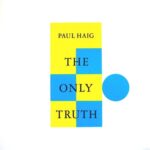 Possibly the best NEW ORDER song that NEW ORDER never recorded, although ex-JOSEF K front man Paul Haig demoed the song to an almost complete standard, when as Haig told ELECTRICITYCLUB.CO.UK: “Bernard Sumner and Donald Johnson started adding more to it like extra guitar, bass and percussion. We spent a long time on the sound of the percussion”. ‘The Only Truth’ was like a brilliant cross between ‘Blue Monday’ and ‘Temptation’, and the 12 inch version was almost as long!
Possibly the best NEW ORDER song that NEW ORDER never recorded, although ex-JOSEF K front man Paul Haig demoed the song to an almost complete standard, when as Haig told ELECTRICITYCLUB.CO.UK: “Bernard Sumner and Donald Johnson started adding more to it like extra guitar, bass and percussion. We spent a long time on the sound of the percussion”. ‘The Only Truth’ was like a brilliant cross between ‘Blue Monday’ and ‘Temptation’, and the 12 inch version was almost as long!
Available on the PAUL HAIG album ‘At Twilight’ via Les Disques Du Crepuscule
SHARK VEGAS You Hurt Me (1986)
 Mark Reeder moved from Manchester to Berlin in 1978 and was for a time Factory Records’ representative in Germany. Reeder often sent records to Bernard Sumner from the emerging electronic club scenes around the world. His own Deutsche musical journey started with DIE UNBEKANNTEN, who mutated into SHARK VEGAS; the sequencer heavy ‘You Hurt Me’ was produced by Sumner at Conny Plank’s studios near Cologne.
Mark Reeder moved from Manchester to Berlin in 1978 and was for a time Factory Records’ representative in Germany. Reeder often sent records to Bernard Sumner from the emerging electronic club scenes around the world. His own Deutsche musical journey started with DIE UNBEKANNTEN, who mutated into SHARK VEGAS; the sequencer heavy ‘You Hurt Me’ was produced by Sumner at Conny Plank’s studios near Cologne.
Available on the MARK REEDER album ‘Collaborator’ via Factory Benelux
https://www.facebook.com/markreedermusic/
REVENGE Jesus I Love You (1989)
 The aptly named REVENGE was Peter Hook’s response to Bernard Sumner’s ELECTRONIC. Comprising of Hook, Dave Hicks and Chris Jones, the single ‘Seven Reasons’ backed with the edgy gothique of ‘Jesus I Love You’ got in the shops a few weeks before ‘Getting Away With It’. Coming over like early SISTERS OF MERCY with some extra raw power, it was a promising calling card. However, as things progressed, the output of REVENGE was not particularly well-received by the music press.
The aptly named REVENGE was Peter Hook’s response to Bernard Sumner’s ELECTRONIC. Comprising of Hook, Dave Hicks and Chris Jones, the single ‘Seven Reasons’ backed with the edgy gothique of ‘Jesus I Love You’ got in the shops a few weeks before ‘Getting Away With It’. Coming over like early SISTERS OF MERCY with some extra raw power, it was a promising calling card. However, as things progressed, the output of REVENGE was not particularly well-received by the music press.
Available on REVENGE album ‘One True Passion V2.0’ via LTM Recordings
http://www.ltmrecordings.com/revenge.html
THE BEAT CLUB Security – Remix (1990)
 Miami duo THE BEAT CLUB were the husband and wife team of producer Ony Rodriguez and singer Mireya Valls. The Bernard Sumner remix of ‘Security’ was the first ever release on Rob’s Records, the imprint of Rob Gretton. Sumner’s creative additions saw an overhaul of the original version with the crucial addition of his own vocal contribution, giving it an unsurprisingly NEW ORDER-like feel along the lines of ‘State Of The Nation’.
Miami duo THE BEAT CLUB were the husband and wife team of producer Ony Rodriguez and singer Mireya Valls. The Bernard Sumner remix of ‘Security’ was the first ever release on Rob’s Records, the imprint of Rob Gretton. Sumner’s creative additions saw an overhaul of the original version with the crucial addition of his own vocal contribution, giving it an unsurprisingly NEW ORDER-like feel along the lines of ‘State Of The Nation’.
Available on the compilation boxed set ‘NEW ORDER Presents Be Music’ (V/A) via Factory Benelux
http://www.ltmrecordings.com/the_beat_club.html
808 STATE Spanish Heart featuring BERNARD SUMNER (1991)
 Having been largely instrumental and sample based on their debut ‘90’, the Manchester dance collective used guest vocalists on their more melodic second long player ‘Ex:El’; while Björk contributed to ‘Ooops’, Bernard Sumner added his voice to the dreamy Balearic of ‘Spanish Heart. A less frantic cousin of ‘Mr Disco’ from ‘Technique’ with its holiday romance subject matter, ‘Spanish Heart’ had a blissful feel not too distantly related to ELECTRONIC’s ‘Some Distant Memory’.
Having been largely instrumental and sample based on their debut ‘90’, the Manchester dance collective used guest vocalists on their more melodic second long player ‘Ex:El’; while Björk contributed to ‘Ooops’, Bernard Sumner added his voice to the dreamy Balearic of ‘Spanish Heart. A less frantic cousin of ‘Mr Disco’ from ‘Technique’ with its holiday romance subject matter, ‘Spanish Heart’ had a blissful feel not too distantly related to ELECTRONIC’s ‘Some Distant Memory’.
Available on the 808 STATE album ‘Ex:El’ via ZTT Records
ELECTRONIC Some Distant Memory (1991)
 Frustrated with the conflicts within NEW ORDER, Bernard Sumner had planned a solo album. But on bumping into Johnny Marr who had just departed THE SMITHS, it was turned into a collaborative project with the occasional guests including Neil Tennant, Chris Lowe and later Karl Bartos. It was ELECTRONIC not just in name but also in nature. The beautiful closing section of ‘Some Distant Memory’ featuring the oboe of Helen Powell enhanced the string synth melancholy.
Frustrated with the conflicts within NEW ORDER, Bernard Sumner had planned a solo album. But on bumping into Johnny Marr who had just departed THE SMITHS, it was turned into a collaborative project with the occasional guests including Neil Tennant, Chris Lowe and later Karl Bartos. It was ELECTRONIC not just in name but also in nature. The beautiful closing section of ‘Some Distant Memory’ featuring the oboe of Helen Powell enhanced the string synth melancholy.
Available on the ELECTRONIC album ‘Electronic’ via EMI Records
http://www.electronicband.com/
THE OTHER TWO Tasty Fish (1991)
 Having done the music for the BBC shows including ‘Making Out’ and ‘Reportage’, Gillian Gilbert and Stephen Morris began turning their stockpile of unused material into songs when NEW ORDER went into hiatus. With Gilbert on lead vocals and amusingly titled after a fish and chip shop near Stockport, ‘Tasty Fish’ was a catchy electropop single that should have been a big hit.
Having done the music for the BBC shows including ‘Making Out’ and ‘Reportage’, Gillian Gilbert and Stephen Morris began turning their stockpile of unused material into songs when NEW ORDER went into hiatus. With Gilbert on lead vocals and amusingly titled after a fish and chip shop near Stockport, ‘Tasty Fish’ was a catchy electropop single that should have been a big hit.
Available on THE OTHER TWO album ‘And You’ via LTM Recordings
http://www.ltmrecordings.com/the_other_two.html
A CERTAIN RATIO Shack Up – Radio Edit (1994)
 Smoother, tighter, speedier and dancier plus more ELECTRONIC in both name and nature, industrial funksters A CERTAIN RATIO reconfigured and re-recorded their 1980 signature cover which had come out on Factory Benelux with Bernard Sumner and Johnny Marr at the production controls. Originally a rare groove track by BANBARRA from 1975, this was part of a 1994 updates retrospective for Creation Records.
Smoother, tighter, speedier and dancier plus more ELECTRONIC in both name and nature, industrial funksters A CERTAIN RATIO reconfigured and re-recorded their 1980 signature cover which had come out on Factory Benelux with Bernard Sumner and Johnny Marr at the production controls. Originally a rare groove track by BANBARRA from 1975, this was part of a 1994 updates retrospective for Creation Records.
Available on the A CERTAIN RATIO album ‘Looking For…’ via Creation Records
MONACO What Do You Want From Me? (1996)
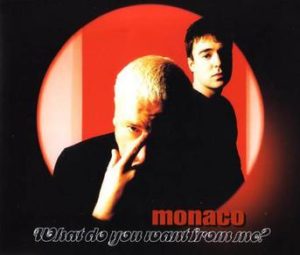 With the demise of REVENGE and seemingly NEW ORDER, Peter Hook regrouped with guitarist David Potts to form MONACO, a combo very much in the mould of the latter. Proudly embracing his signature melodic bass sound, the first single ‘What Do You Want From Me?’ sounded like it could have come off ‘Technique’, with Hook’s Curtis-like baritone and Potts’ Sumner-esque refrain enabling a prompt audience acceptance for the duo.
With the demise of REVENGE and seemingly NEW ORDER, Peter Hook regrouped with guitarist David Potts to form MONACO, a combo very much in the mould of the latter. Proudly embracing his signature melodic bass sound, the first single ‘What Do You Want From Me?’ sounded like it could have come off ‘Technique’, with Hook’s Curtis-like baritone and Potts’ Sumner-esque refrain enabling a prompt audience acceptance for the duo.
Available on the MONACO album ‘Music For Pleasure’ via Polydor Records
http://peterhook.get-ctrl.com/#/
THE CHEMICAL BROTHERS featuring BERNARD SUMNER Out Of Control (1999)
 ‘Out Of Control’ was THE CHEMICAL BROTHERS’ sonic template actually fulfilling its potential within a song based format with Bernard Sumner as the willing conspirator. With echoes of NEW ORDER’s 12 inch only excursions like ‘Blue Monday’, ‘Confusion’ and ‘Thieves like Us’, ‘Out Of Control’ had everything from a bombastic backbeat, cerebral sequences and bizarre lyrics, especially when Sumner resigned to the fact that “Maybe my moustache is too much…”
‘Out Of Control’ was THE CHEMICAL BROTHERS’ sonic template actually fulfilling its potential within a song based format with Bernard Sumner as the willing conspirator. With echoes of NEW ORDER’s 12 inch only excursions like ‘Blue Monday’, ‘Confusion’ and ‘Thieves like Us’, ‘Out Of Control’ had everything from a bombastic backbeat, cerebral sequences and bizarre lyrics, especially when Sumner resigned to the fact that “Maybe my moustache is too much…”
Available on THE CHEMICAL BROTHERS album ‘Singles 93-03’ via Virgin Records
http://www.thechemicalbrothers.com/
BLANK & JONES featuring BERNARD SUMNER Miracle Cure (2008)
 Having worked with Robert Smith of THE CURE, German trance duo Piet Blank and Jaspa Jones had Bernard Sumner high on their list for their album ‘The Logic Of Pleasure’, which also featured Claudia Brücken. The track managed to fill the electronic dance gap that had opened up with NEW ORDER’s more rock focused albums ‘Get Ready’ and ‘Waiting For The Siren’s Call’, while the single release came with excellent remixes from Mark Reeder and Paul Humphreys from OMD.
Having worked with Robert Smith of THE CURE, German trance duo Piet Blank and Jaspa Jones had Bernard Sumner high on their list for their album ‘The Logic Of Pleasure’, which also featured Claudia Brücken. The track managed to fill the electronic dance gap that had opened up with NEW ORDER’s more rock focused albums ‘Get Ready’ and ‘Waiting For The Siren’s Call’, while the single release came with excellent remixes from Mark Reeder and Paul Humphreys from OMD.
Available on the BLANK & JONES album ‘The Logic Of Pleasure’ via Soundcolours
FACTORY FLOOR A Wooden Box – STEPHEN MORRIS remix (2010)
 Some say the music of FACTORY FLOOR is genius, others a load of repetitive bleeping to an incessant four-to-the-floor beat. Stephen Morris was a fan, hearing kindred spirits in their use of sequencers next to live drums and guitars, sometimes on the brink of post-industrial noise chaos. With his remix of ‘Wooden Box’, Morris brought out its more tuneful elements and added some vocoder processing. He continued to work with the band as the producer of 2011’s ‘(Real Love)’.
Some say the music of FACTORY FLOOR is genius, others a load of repetitive bleeping to an incessant four-to-the-floor beat. Stephen Morris was a fan, hearing kindred spirits in their use of sequencers next to live drums and guitars, sometimes on the brink of post-industrial noise chaos. With his remix of ‘Wooden Box’, Morris brought out its more tuneful elements and added some vocoder processing. He continued to work with the band as the producer of 2011’s ‘(Real Love)’.
Available on the FACTORY FLOOR single ‘A Wooden Box’ via Blast First Petite
https://www.facebook.com/factoryfloor/
WESTBAM featuring BERNARD SUMNER She Wants (2013)
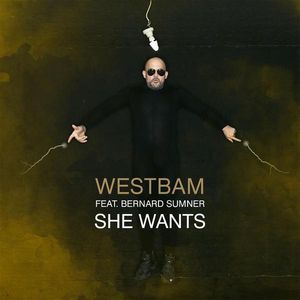 Techno DJ WESTBAM celebrated 30 years in the music business with an intriguing mature collection of songs under the title of ‘Götterstrasse’ which featured Iggy Pop, Brian Molko and Hugh Cornwall. ‘She Wants’ saw the return of Bernard Sumner on a new electronic recording. With the guitar driven BAD LIEUTENANT having been his main vehicle over the intervening years, it was great to hear him on something approaching the sound of synth-centred NEW ORDER again.
Techno DJ WESTBAM celebrated 30 years in the music business with an intriguing mature collection of songs under the title of ‘Götterstrasse’ which featured Iggy Pop, Brian Molko and Hugh Cornwall. ‘She Wants’ saw the return of Bernard Sumner on a new electronic recording. With the guitar driven BAD LIEUTENANT having been his main vehicle over the intervening years, it was great to hear him on something approaching the sound of synth-centred NEW ORDER again.
Available on the WESTBAM album ‘Götterstrasse’ via Vertigo Germany
NEW ORDER featuring BRANDON FLOWERS Superheated (2015)
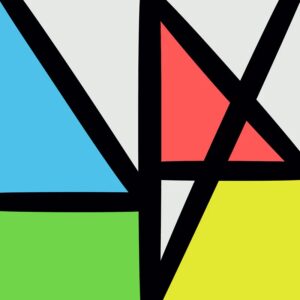 Brandon Flowers named THE KILLERS after a fictional band in the ‘Crystal’ video while his own combo covered the JOY DIVISION standard ‘Shadowplay’ for the ‘Control’ film. So a collaboration was not totally unexpected in this union of the sorcerer and the apprentice. A Stuart Price production featuring Flowers on the chorus, ‘Superheated’ was a slice of supreme pop which despite the frantic drum ‘n’ bass elements, sounded more like THE KILLERS than it did NEW ORDER.
Brandon Flowers named THE KILLERS after a fictional band in the ‘Crystal’ video while his own combo covered the JOY DIVISION standard ‘Shadowplay’ for the ‘Control’ film. So a collaboration was not totally unexpected in this union of the sorcerer and the apprentice. A Stuart Price production featuring Flowers on the chorus, ‘Superheated’ was a slice of supreme pop which despite the frantic drum ‘n’ bass elements, sounded more like THE KILLERS than it did NEW ORDER.
Available on the NEW ORDER album ‘Music Complete’ via Mute Artists
KOISHII & HUSH featuring GILLIAN GILBERT Lifetime – FM ATTACK Remix (2016)
 Simon Langford and Alex Sowyrda are the British-Canadian duo KOISHII & HUSH whose tracks have featured unusual vocalists ranging from DURAN DURAN’s John Taylor to actress Joanne Whalley. Gillian Gilbert lent her voice to ‘Lifetime’, sounding not unlike Sarah Blackwood who incidentally sang on their 2015 offering ‘Rules & Lies’. The remix from FM ATTACK aka Canadian synthwave exponent Shawn Ward added a serene crystalline quality to proceedings.
Simon Langford and Alex Sowyrda are the British-Canadian duo KOISHII & HUSH whose tracks have featured unusual vocalists ranging from DURAN DURAN’s John Taylor to actress Joanne Whalley. Gillian Gilbert lent her voice to ‘Lifetime’, sounding not unlike Sarah Blackwood who incidentally sang on their 2015 offering ‘Rules & Lies’. The remix from FM ATTACK aka Canadian synthwave exponent Shawn Ward added a serene crystalline quality to proceedings.
Available on the KOISHII & HUSH single ‘Lifetime’ via Grammaton Recordings
RUSTY EGAN featuring PETER HOOK The Other Side (2017)
 With the opening salvo ‘The Otherside’ featuring Peter Hook on Rusty Egan’s debut solo album, sonic comparisons with NEW ORDER were inevitable and the song’s melodic basslines showed how much his sound was a vital part of the band. The Bass Viking’s vocals also exuded a vulnerability that listeners could empathise with. But with Hooky touring the JOY DIVISION and NEW ORDER back catalogue, new material has been rare.
With the opening salvo ‘The Otherside’ featuring Peter Hook on Rusty Egan’s debut solo album, sonic comparisons with NEW ORDER were inevitable and the song’s melodic basslines showed how much his sound was a vital part of the band. The Bass Viking’s vocals also exuded a vulnerability that listeners could empathise with. But with Hooky touring the JOY DIVISION and NEW ORDER back catalogue, new material has been rare.
Available on the RUSTY EGAN album ‘Welcome To The Dance Floor’ via Black Mosaic
FREEBASS You Don’t Know This About Me – Remix Instrumental (2017)
 A Mancunian supergroup of three bassists Hooky, Mani and Andy Rourke that spent five years in gestation before imploding. Producer Derek Miller aka OUTERNATIONALE was a fan and told ELECTRICITYCLUB.CO.UK: “Really liked this song despite Hooky’s project falling apart on him! As you know, I’ve started and thought it deserved a proper release, albeit belatedly! So, I’ve been back in the studio with it and totally overhauled it sonically. There’s also a surprisingly punchy instrumental mix now”
A Mancunian supergroup of three bassists Hooky, Mani and Andy Rourke that spent five years in gestation before imploding. Producer Derek Miller aka OUTERNATIONALE was a fan and told ELECTRICITYCLUB.CO.UK: “Really liked this song despite Hooky’s project falling apart on him! As you know, I’ve started and thought it deserved a proper release, albeit belatedly! So, I’ve been back in the studio with it and totally overhauled it sonically. There’s also a surprisingly punchy instrumental mix now”
Available on the FREEBASS single ‘You Don’t Know This About Me’ via 5 Pin Din Recordings
http://www.5pindinrecordings.co.uk
Text by Chi Ming Lai
24th March 2017













 ELECTRICITYCLUB.CO.UK gives its warmest thanks to Paul Haig
ELECTRICITYCLUB.CO.UK gives its warmest thanks to Paul Haig
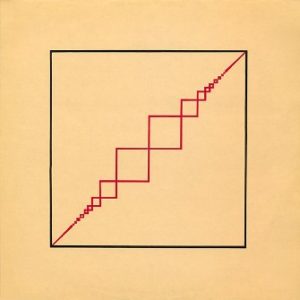
 One of the books which influenced the approach I took was an excellent Creation Records history by Dave Cavanagh, which Alan McGee slated as the accountant’s version of Creation when it first appeared (though he changed his mind later).
One of the books which influenced the approach I took was an excellent Creation Records history by Dave Cavanagh, which Alan McGee slated as the accountant’s version of Creation when it first appeared (though he changed his mind later).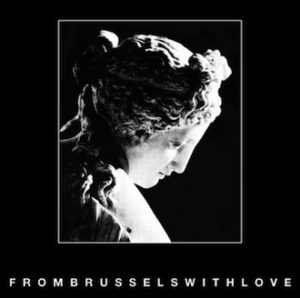 Factory Benelux and Les Disques du Crépuscule have common roots, but were quite different entities in their original ethos?
Factory Benelux and Les Disques du Crépuscule have common roots, but were quite different entities in their original ethos?
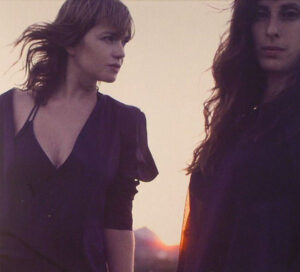
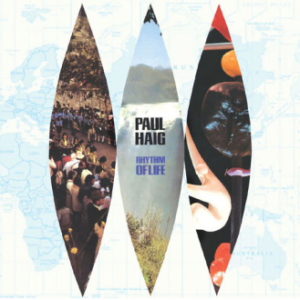 Paul just did things his way and wasn’t prepared to jump through all the hoops required of a mainstream pop star. For a start he was – and remains – far too shy.
Paul just did things his way and wasn’t prepared to jump through all the hoops required of a mainstream pop star. For a start he was – and remains – far too shy.



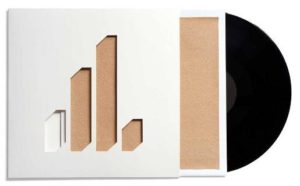 The only obvious, practical shape for the die-cut was Peter Saville’s original ‘bar chart’ logo, which appeared on the labels of most Factory releases between 1979 and 1980, Fact 14 included. It just looks right, and is also suggestive of a graphic equalizer, which I suppose is a bit Hannett. The pressing plant had already printed 2000 copies of the original inner bag though, so we had to throw those away. All the problems and changes also mean that the release date was late. Very Factory, I suppose.
The only obvious, practical shape for the die-cut was Peter Saville’s original ‘bar chart’ logo, which appeared on the labels of most Factory releases between 1979 and 1980, Fact 14 included. It just looks right, and is also suggestive of a graphic equalizer, which I suppose is a bit Hannett. The pressing plant had already printed 2000 copies of the original inner bag though, so we had to throw those away. All the problems and changes also mean that the release date was late. Very Factory, I suppose.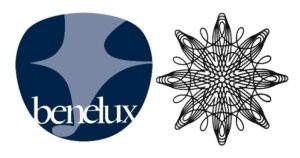
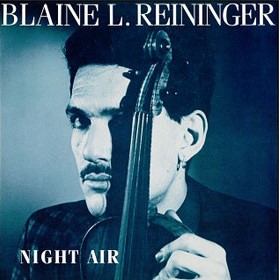 It’s a magical album about exile in Brussels and was a key influence on my relocating to the city a couple of years later. Expertly recorded and engineered by Gareth Jones, I might add. I’d love him to tour the whole album – maybe there will be an opportunity after
It’s a magical album about exile in Brussels and was a key influence on my relocating to the city a couple of years later. Expertly recorded and engineered by Gareth Jones, I might add. I’d love him to tour the whole album – maybe there will be an opportunity after 





Follow Us!